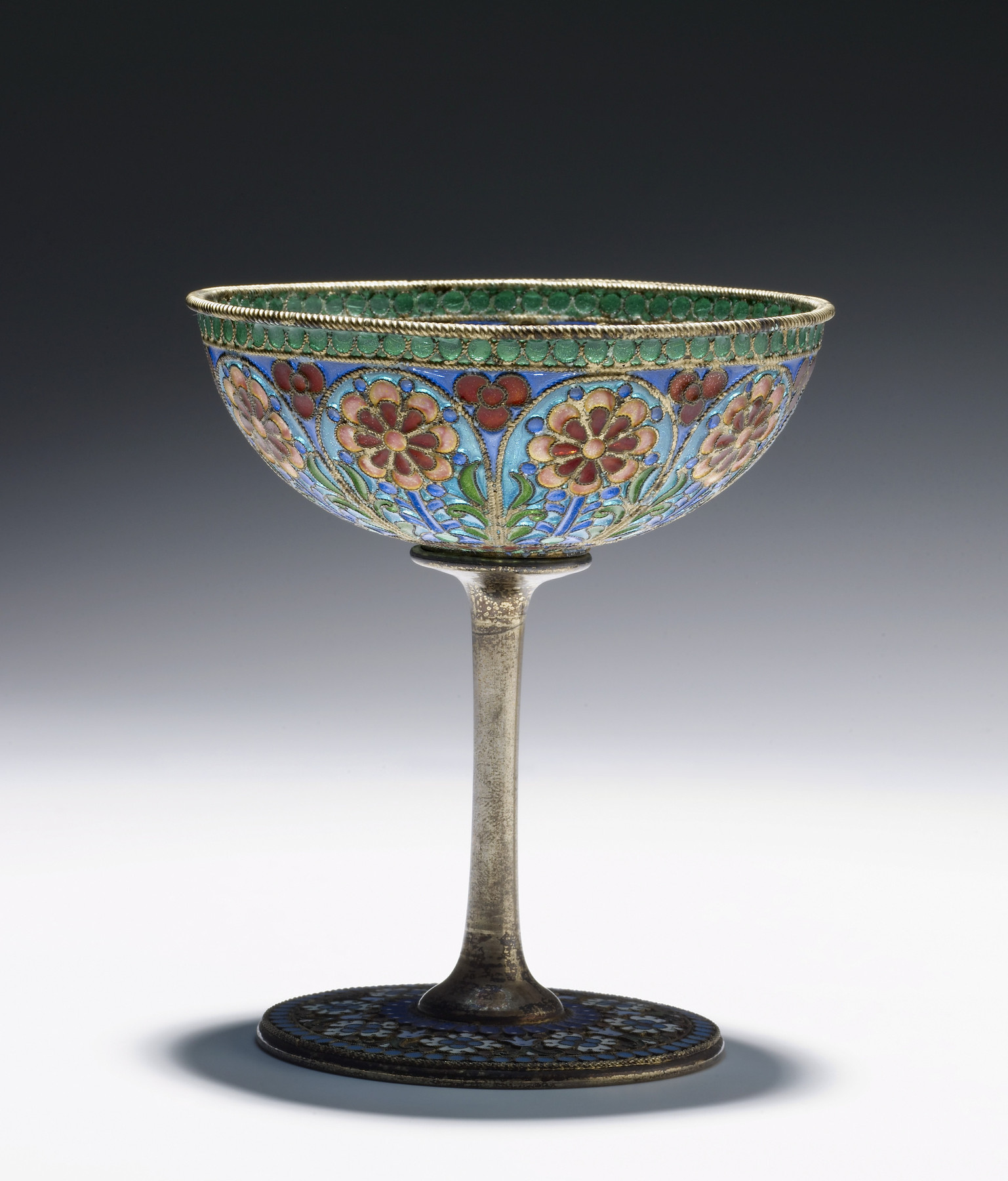Sherbet Cup
(18th and 19th Centuries )
The cup's interior is divided into nine arched panels, each containing a blossom with an inner row of red petals and an outer row of pink petals, a blue stem, and green foliage over a pale blue surface, all in plique-à-jour enamel. Bordering the upper edge is a row of opaque green circles and extending along its base are rows of red circles and pale green drops, also in plique-a-jour. In the center of the bowl is a rosette in opaque, turquoise filigree enamel.
The foot, which is also in opaque filigree enamel, introduces several additional colors: the inner border is composed of deep blue lozenges with white dots, followed by a band of blossoms in white and blue separated by pale blue trefoil shapes raised over a stippled ground. Bordering the foot is a row of circles in medium blue.
Inscription
Provenance
Provenance (from the French provenir, 'to come from/forth') is the chronology of the ownership, custody, or location of a historical object. Learn more about provenance at the Walters.
Jean M. Riddell, Washington, D.C. [date and mode of acquisition unknown]; Walters Art Museum, 2010, by bequest.
Geographies
Russia, Moscow (Place of Origin)
Measurements
H: 3 15/16 x Diam of cup: 3 3/8 in. (10 x 8.6 cm); Diam at base: 2 1/2 in. (6.4 cm)
Credit Line
Bequest of Mrs. Jean M. Riddell, 2010
Location in Museum
Not on view
Accession Number
In libraries, galleries, museums, and archives, an accession number is a unique identifier assigned to each object in the collection.
In libraries, galleries, museums, and archives, an accession number is a unique identifier assigned to each object in the collection.
44.746


